ADDICTION
ALCOHOL DEPENDENCE
QUIT SMOKING
ALLERGY
ANTI FUNGAL
FUNGAL INFECTION
FUNGAL NAIL INFECTIONS
ANTI-REJECTION DRUGS
ANTI WORM
ANTIBIOTIC
BACTERIAL INFECTIONS
ARTHRITIS
GOUT
OSTEOARTHRITIS
RHEUMATOID ARTHRITIS
BLOOD
LOW PLATELET COUNT
THROMBOPHLEBITIS
VARICOSE VEINS
COLON
ANAL FISSURE
PILES
ULCERATIVE COLITIS
DIABETES CARE
DIABETES INSIPIDUS
DIABETES TYPE
DIABETIC FOOT ULCERS
GLUCOSE MONITOR
EYES/EAR CARE
DRY EYES
EYE CARE
EYE EXAMINATION
EYE INFECTION
EYE LASHES
EYE PAIN
GLAUCOMA
OCULAR HYPERTENSION
UVEITIS
FEVER CARE
MALARIA
RHEUMATIC FEVER
TYPHOID FEVER
GASTROINTESTINAL
ACIDITY
CONSTIPATION
CROHN'S DISEASE
DIARRHOEA
GALLBLADDER STONES
INTESTINAL ULCERS
IRRITABLE BOWEL SYNDROME
MOTION SICKNESS
NAUSEA
Candid B Cream 20 gm (Clotrimazole/Beclometasone)
| Active Ingredient (Generic Name): | Clotrimazole/Beclometasone |
|---|---|
| Indication: | skin infections |
| Manufacturer: | Glenmark Pharmaceuticals Ltd. |
| Packaging: | Available in 10 gm, 20 gm and 30 gm tubes |
| Strength: | 20g |
From: $31.00
If you’ve ever dealt with stubborn fungal skin infections causing discomfort and irritation, Candid B Cream 20 gm might be a familiar name. This cream offers a combination of clotrimazole and beclometasone, but have you ever wondered about the specifics of how these two ingredients work together to combat skin issues effectively? Understanding the mechanism behind this cream’s success could shed light on its effectiveness and guide you on its proper usage for best results.
Why is this medication prescribed?
Candid B Cream is prescribed to treat fungal skin infections like ringworm and athlete’s foot. This medication contains clotrimazole, an antifungal agent that works by stopping the growth of fungus on the skin. It also contains beclomethasone, a corticosteroid that helps reduce itching, redness, and swelling associated with the infection. When applied to the affected area as directed by your healthcare provider, Candid B Cream helps alleviate the symptoms of these fungal skin infections.
Ringworm, also known as tinea corporis, presents as a red, circular rash with raised edges that can be itchy or painful. Athlete’s foot, medically termed tinea pedis, affects the feet, especially between the toes, causing itching, burning, and cracked skin. Candid B Cream is effective in treating these conditions by targeting the underlying fungal infection and providing relief from discomfort.
Remember to follow the instructions provided by your doctor or pharmacist when using Candid B Cream to ensure maximum effectiveness in treating your fungal skin infection.
How should this medicine be used?
To apply this medication properly for best results, follow the instructions provided by your healthcare provider or pharmacist.
Before using Candid B Cream, make certain the affected area is clean and dry. Apply a thin layer of the cream to the affected skin and gently rub it in. Wash your hands after applying the medication, unless your hands are the affected area.
It’s generally recommended to use Candid B Cream twice a day, or as directed by your healthcare provider. Don’t bandage or wrap the treated area unless instructed to do so by your doctor.
Avoid getting the cream in your eyes, nose, or mouth. If accidental contact occurs, rinse thoroughly with water.
Continue using this medication for the prescribed duration, even if symptoms improve before completion. If there’s no improvement or if the condition worsens, consult your healthcare provider.
Other uses for this medicine
Consider discussing with your healthcare provider or pharmacist about potential alternative uses for this medication. While Candid B Cream is primarily prescribed for fungal skin infections like athlete’s foot, jock itch, and ringworm, it may also have other applications. Some healthcare providers may recommend it for treating certain types of dermatitis or eczema, where the combination of clotrimazole and beclometasone can help alleviate inflammation and itching.
Additionally, in cases of mild psoriasis, your healthcare provider might suggest using Candid B Cream to manage symptoms.
Moreover, Candid B Cream could potentially assist in treating inflammatory conditions like intertrigo, a rash that occurs in skin folds, due to its anti-inflammatory properties. However, it’s important to consult a healthcare professional before using this medication for conditions other than those it’s specifically intended for. They can provide guidance tailored to your specific needs and ensure the safe and effective use of Candid B Cream for any alternative purposes.
What special precautions should I follow?
When using Candid B Cream, it’s important to check for any potential drug interactions to guarantee your safety and the effectiveness of the treatment.
Be sure to consult with your healthcare provider or pharmacist if you’re taking any other medications or have any underlying health conditions.
Taking these precautions can help you use Candid B Cream safely and maximize its benefits in managing your skin condition.
Check for Drug Interactions
Before taking Candid B Cream, make sure to consult with your healthcare provider about potential drug interactions. It’s essential to be informed about how different medications can interact with Candid B Cream to avoid any adverse effects.
Here are some key points to bear in mind:
-
Provide a list of all medications: Inform your healthcare provider about any prescription, over-the-counter, or herbal medications you’re currently taking to assess potential interactions.
-
Discuss medical conditions: Make sure to disclose any underlying medical conditions you have, as certain health issues may increase the risk of drug interactions.
-
Follow dosage instructions carefully: Adhere to the recommended dosage of Candid B Cream as prescribed by your healthcare provider to minimize the risk of drug interactions.
What special dietary instructions should I follow?
To uphold the best results while using Candid B Cream, make sure that you adhere to specific dietary guidelines. When using this cream, there are no specific dietary restrictions that need to be followed. However, it’s important to maintain a healthy and balanced diet to support your overall well-being and aid in the healing process. Eating a diet rich in fruits, vegetables, whole grains, and lean proteins can help boost your immune system and promote faster recovery from skin conditions that Candid B Cream is used to treat.
Additionally, staying hydrated by drinking an adequate amount of water each day is vital for maintaining healthy skin. Water helps flush out toxins from your body and keeps your skin hydrated, which can improve the effectiveness of the cream. Avoiding excessive consumption of sugary foods and beverages may also be beneficial, as high sugar intake can sometimes worsen certain skin conditions.
What should I do if I forget a dose?
If you forget a dose of Candid B Cream, try to take it as soon as you remember. However, if it’s almost time for your next dose, skip the missed one and continue with your regular dosing schedule. Don’t apply extra cream to make up for the missed dose, as it won’t improve your condition faster and may increase the risk of side effects.
Consistency in using the cream is essential for its effectiveness. If you frequently forget doses, consider setting alarms or reminders to help you remember. You can also create a routine around applying the cream, like associating it with a daily activity, to make it a habit.
If you have missed several doses and are unsure about what to do, consult your healthcare provider or pharmacist for guidance. They can provide personalized advice based on your specific situation and help you navigate any concerns you may have regarding missed doses. Remember, following the prescribed dosing schedule is crucial for the best results of Candid B Cream.
What side effects can this medication cause?
Candid B Cream may cause side effects that range from mild to severe. It’s important to monitor any persistent or severe symptoms that may arise while using this medication.
If you experience any serious side effects, be sure to contact your doctor promptly for guidance and assistance.
Monitor Persistent or Severe Symptoms
Monitoring persistent or severe symptoms is vital when using Candid B Cream, as this medication may cause various side effects that require attention. If you notice any concerning symptoms, it’s important to seek medical advice promptly.
Here are some potential side effects to watch out for:
- Skin irritation, such as redness or itching, may occur at the application site.
- Prolonged use can lead to thinning of the skin, making it more susceptible to damage.
- In rare cases, allergic reactions like swelling or difficulty breathing may occur.
Being attentive to any unusual or severe reactions is important to safeguard your well-being while using Candid B Cream.
Some side effects can be serious. If you experience any of the following symptoms, call your doctor immediately:
Serious side effects may include severe skin irritation, allergic reactions, or signs of thinning skin when using Candid B Cream. If you experience any of the following symptoms, contact your doctor immediately:
- Severe itching, redness, or burning sensation on the skin.
- Swelling of the face, lips, or throat, which may indicate an allergic reaction.
- Development of stretch marks, skin discoloration, or increased hair growth at the application site.
These symptoms could be signs of a more severe reaction to the medication. It’s imperative to seek medical attention promptly to address any potential complications and safeguard your well-being.
What should I know about the storage and disposal of this medication?
Wondering how to properly store and dispose of Candid B Cream? It’s important to store this medication at room temperature, away from moisture and heat, to maintain its effectiveness. Avoid storing it in the bathroom or near the kitchen sink. Make sure that the cap is tightly closed when not in use to prevent contamination.
When it comes to disposal, it’s essential to follow specific guidelines to guarantee the safe disposal of Candid B Cream. Don’t flush this medication down the toilet or pour it into a drain unless instructed to do so. Instead, consult your pharmacist or local waste disposal company on how to properly dispose of unused or expired medication. They can provide you with information on medication take-back programs or special disposal containers.
In case of an emergency/overdose
In the event of an emergency or overdose involving Candid B Cream, seek immediate medical attention. An overdose of Candid B Cream can lead to serious side effects, such as skin irritation, burning sensation, or allergic reactions.
If you accidentally swallow the cream, experience difficulty breathing, or have severe skin reactions like blistering, swelling, or intense itching, don’t delay seeking help. Contact your local poison control center or go to the nearest emergency room for prompt medical intervention.
When seeking medical assistance, remember to take the medication packaging or container with you, so healthcare providers can easily identify the product and provide appropriate treatment. It’s essential to disclose the amount of cream used and any symptoms experienced to healthcare professionals to receive the most effective care.
Never attempt to self-treat an overdose or emergency situation with Candid B Cream without proper medical guidance, as doing so may worsen the condition or lead to complications.
What other information should I know?
If you’re using Candid B Cream, it’s important to be aware of other key information that can impact its effectiveness and your overall health.
First and foremost, it’s vital to follow the prescribed dosage and duration of use as instructed by your healthcare provider. Using more cream than recommended or for a longer period can lead to adverse effects.
Additionally, avoid applying Candid B Cream on broken or irritated skin to prevent further complications. It’s essential to inform your doctor about any other medications or skin products you’re using to avoid potential interactions that could affect the cream’s efficacy.
Furthermore, if you experience any severe skin reactions like excessive redness, itching, or swelling after applying the cream, discontinue use immediately and consult your healthcare provider.
Keep Candid B Cream away from your eyes, nose, and mouth, as it’s meant for external use only. Store the cream at room temperature away from direct sunlight and moisture.
Brand names
When selecting a brand name for the cream, consider choosing a recognizable and trusted option like Candid B Cream. This cream is well-known in the market for its effectiveness in treating various skin conditions. Below is a table comparing Candid B Cream with other similar brand names to help you make an informed decision:
| Brand Name | Active Ingredients | Manufacturer |
|---|---|---|
| Candid B Cream | Clotrimazole/Beclometasone | Glenmark Pharmaceuticals |
| Lotrisone | Clotrimazole/Betamethasone | Merck Sharp & Dohme Corp. |
| Myclo-G | Clotrimazole/Beclometasone | Dr. Reddy’s Laboratories |
| Clotrin-B | Clotrimazole/Beclometasone | Sun Pharmaceutical Industries |
Comparing different brand names can help you choose the one that suits your needs the best. Make sure to consult with your healthcare provider before deciding on a specific brand to confirm it is the right choice for your skin condition.
Purchase Locations
After considering the various brand names available, explore different purchase locations where you can buy Candid B Cream to effectively treat your skin condition.
-
Local Pharmacies: One of the most common places to purchase Candid B Cream is your local pharmacy. Pharmacies often stock a variety of skin creams and medications, including Candid B Cream. You can consult with the pharmacist to make sure you’re choosing the right product for your skin condition.
-
Online Retailers: Another convenient option is to purchase Candid B Cream from online retailers. Many reputable online platforms offer this cream for sale, allowing you to order from the comfort of your home and have it delivered to your doorstep.
-
Medical Supply Stores: Some medical supply stores also carry Candid B Cream. Visiting these stores can provide you with the opportunity to discuss your needs with knowledgeable staff members who can assist you in selecting the appropriate cream for your skin issue.
To summarise
To conclude, explore the different purchase locations mentioned to easily acquire Candid B Cream for your skin condition treatment.
You can find Candid B Cream available for purchase in various locations, including local pharmacies, online stores, and even supermarkets. Local pharmacies are a convenient option as they usually stock a range of skincare products, making it easy to pick up the cream along with any other items you may need.
Online stores offer the convenience of shopping from the comfort of your own home and often provide a wide selection of brands and sizes to choose from. Additionally, supermarkets may also carry Candid B Cream in their health and beauty section, allowing you to add it to your regular shopping list.


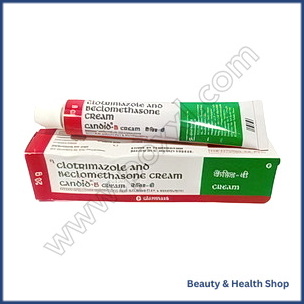
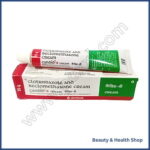
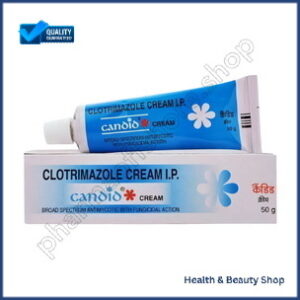

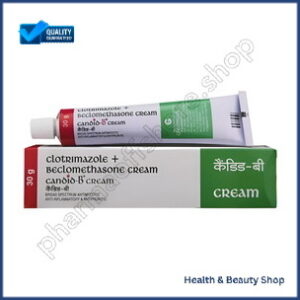
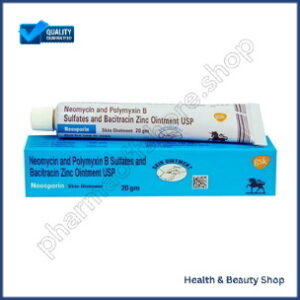
There are no reviews yet.